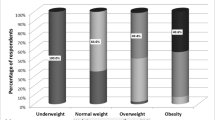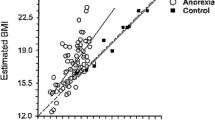Abstract
The concept of body image is thought to consist of two components: body size perception and attitudes towards the body. Correspondingly, two distinct modalities of body image dysfunction seem to be relevant for anorexia nervosa: perceptual body size distortion and cognitive-evaluative dissatisfaction. Consequently, various techniques to assess body image have been developed to assess body image disturbance in eating disorders, particularly anorexia nervosa. This review article compares the numerous methods of assessing body image used in recent studies on anorexia nervosa and discusses the various findings. The findings suggest that body image disturbance is not due to any perceptual deficit, but is based on cognitive-evaluative dissatisfaction. Although overestimation of body size is not a universal symptom in eating disorders, this issue is interesting in terms of prognostic and therapeutic implications. Thus, body size estimation remains a worthwhile approach to assessing body image disturbance in eating disorders. The identification of sensory and non-sensory factors in body image is considered a promising issue for further research.
Similar content being viewed by others
Author information
Authors and Affiliations
Additional information
Accepted: 3 April 2001
Rights and permissions
About this article
Cite this article
Skrzypek, S., Wehmeier, P. & Remschmidt, H. Body image assessment using body size estimation in recent studies on anorexia nervosa. A brief review.. European Child & Adolescent Psychiatry 10, 215–221 (2001). https://doi.org/10.1007/s007870170010
Issue Date:
DOI: https://doi.org/10.1007/s007870170010




